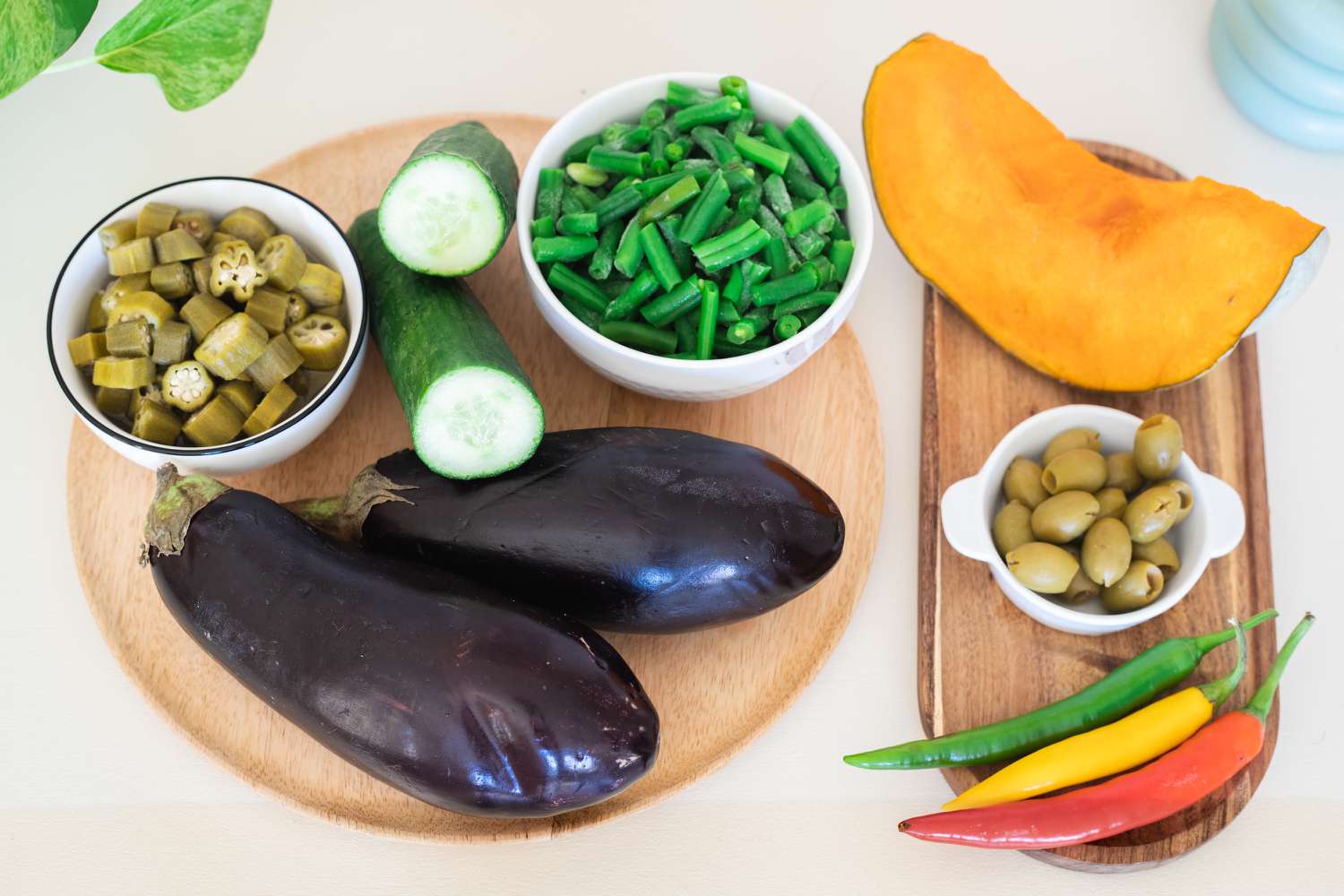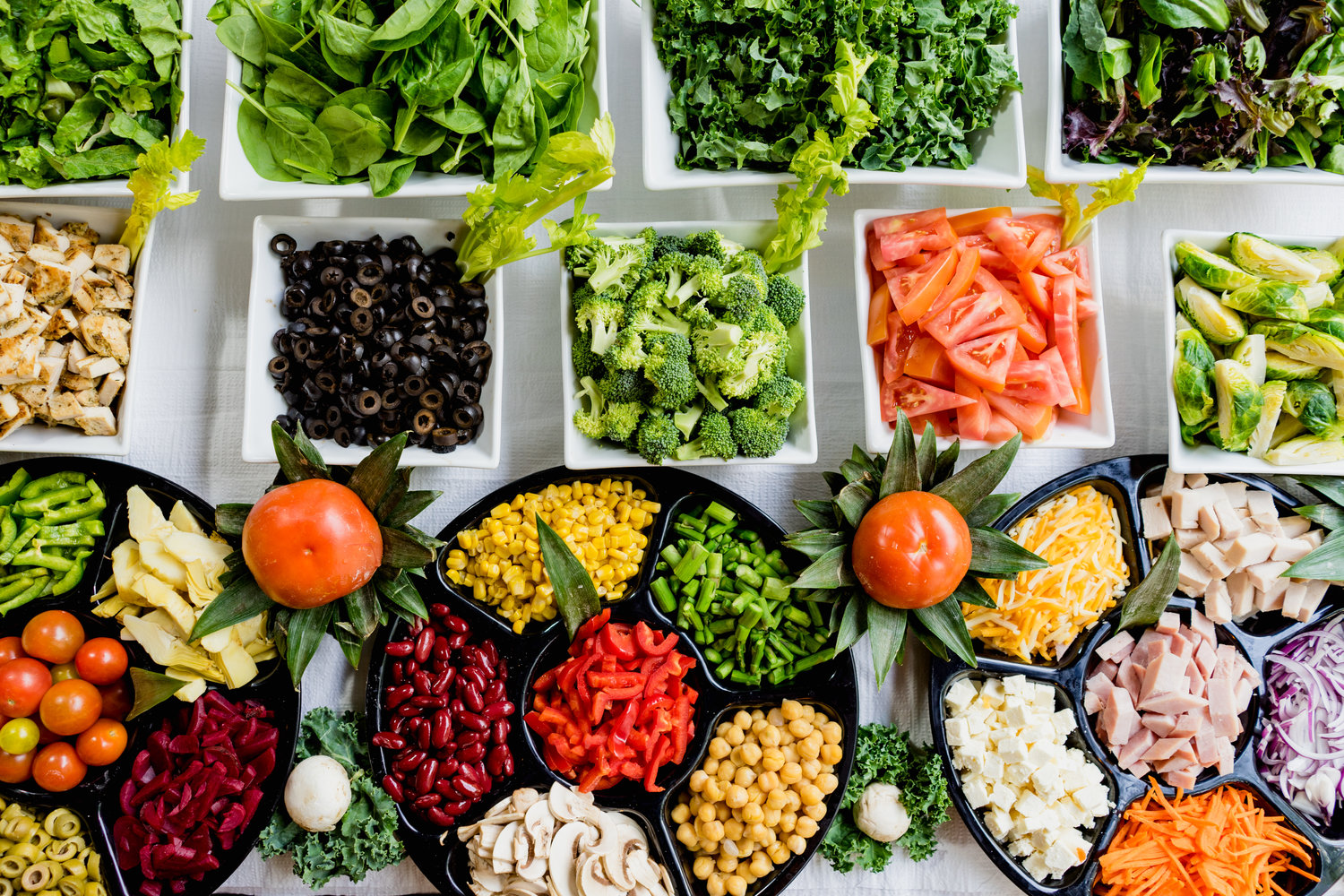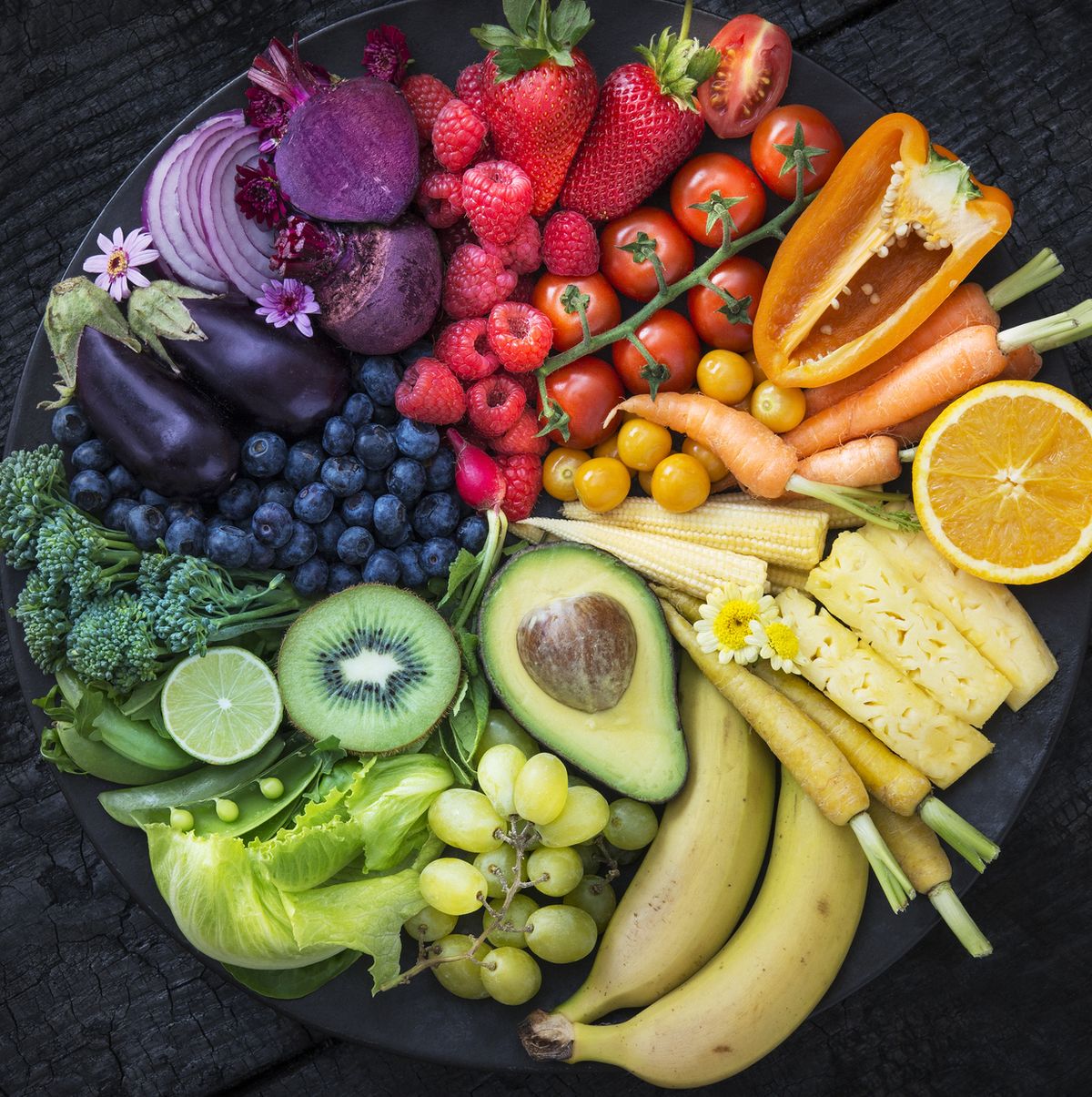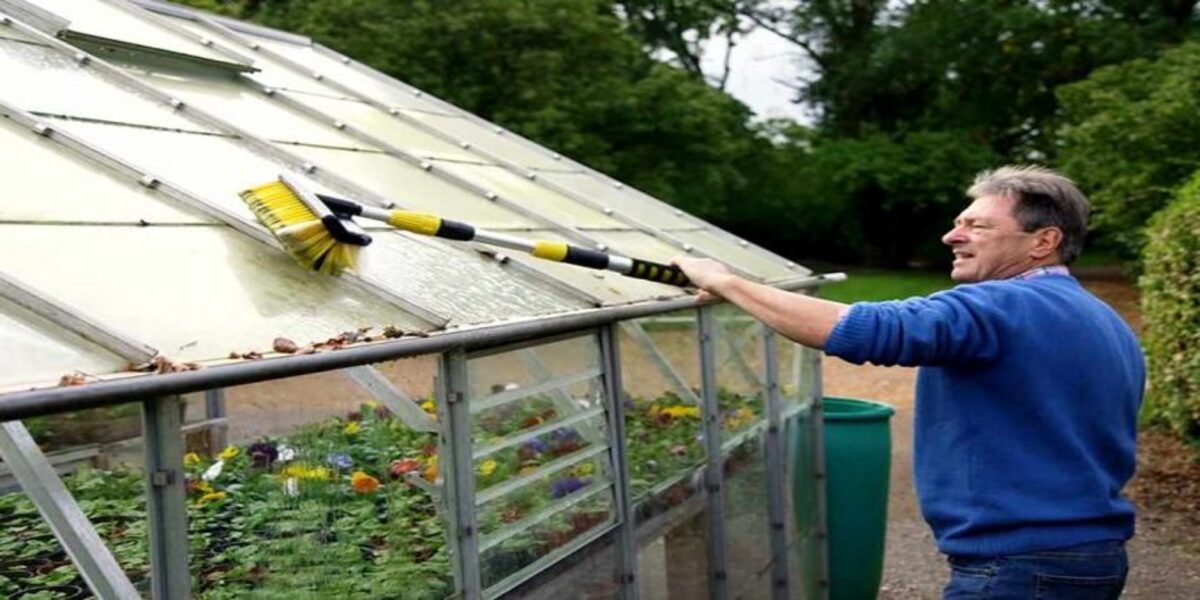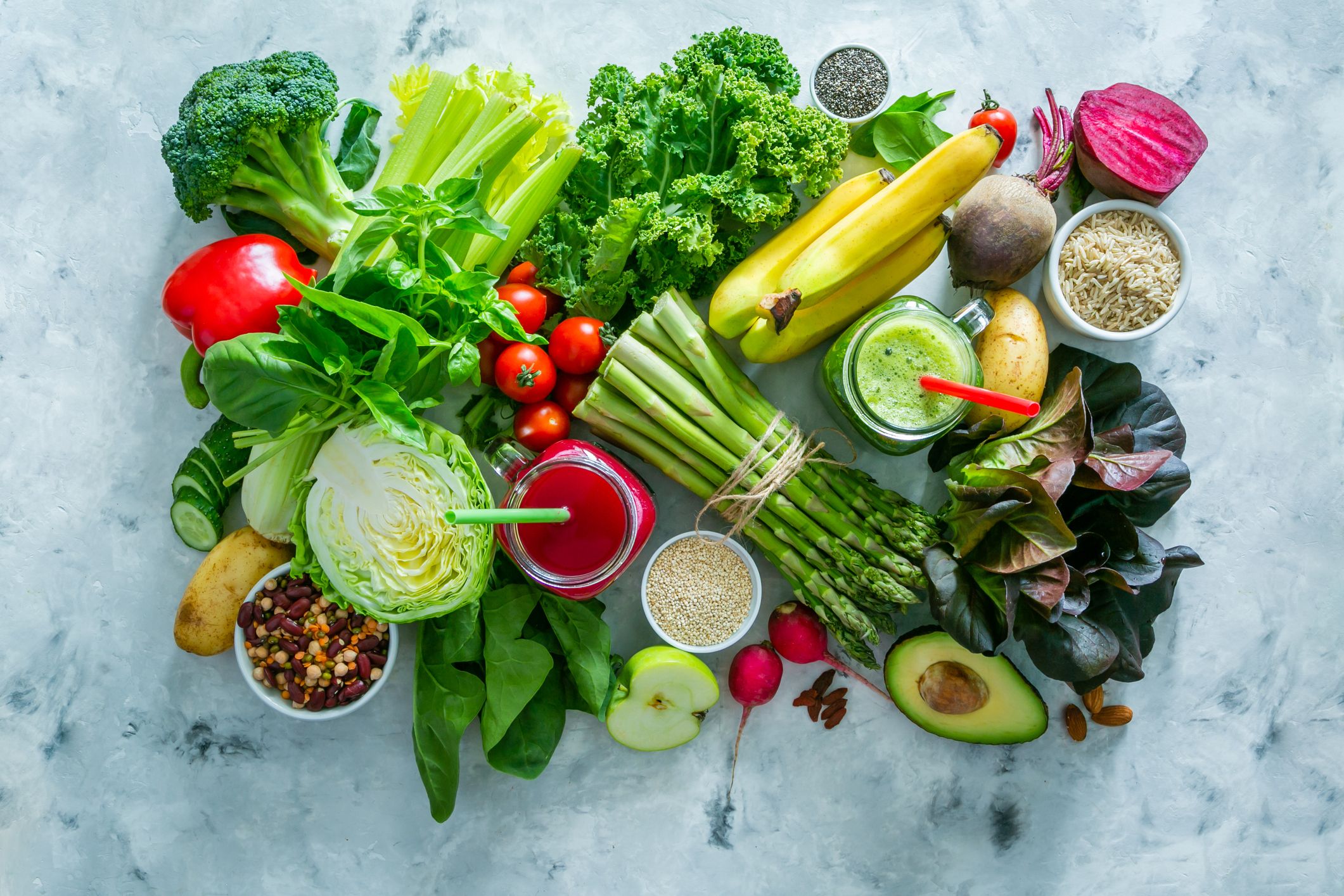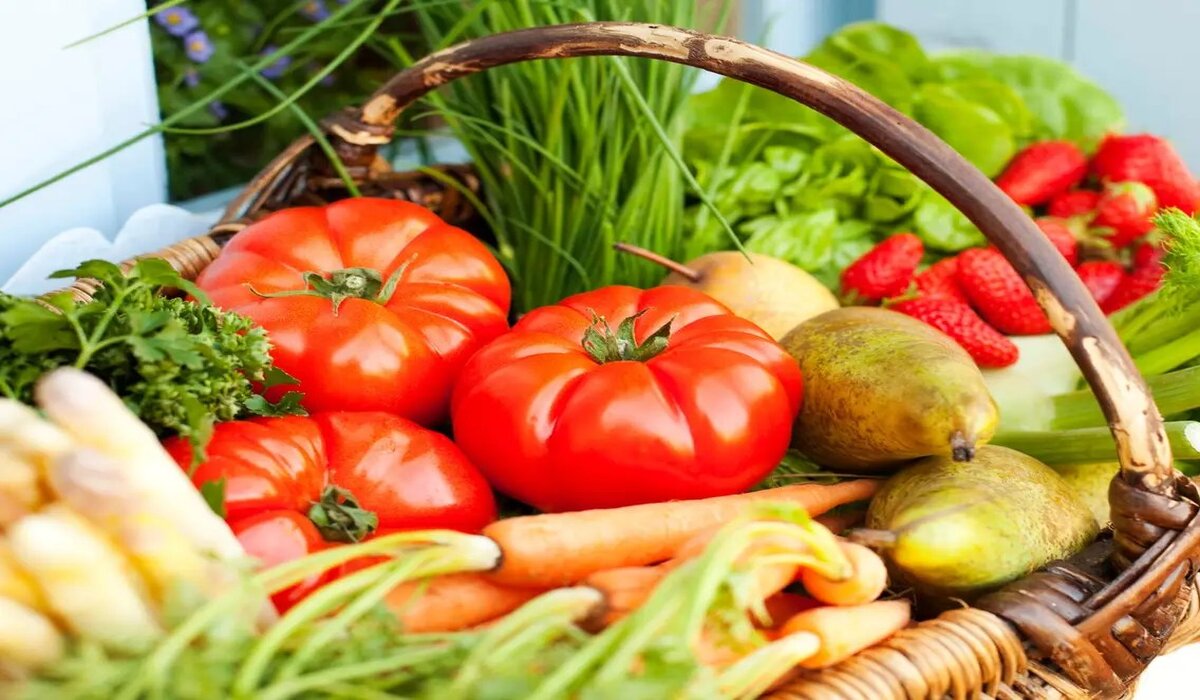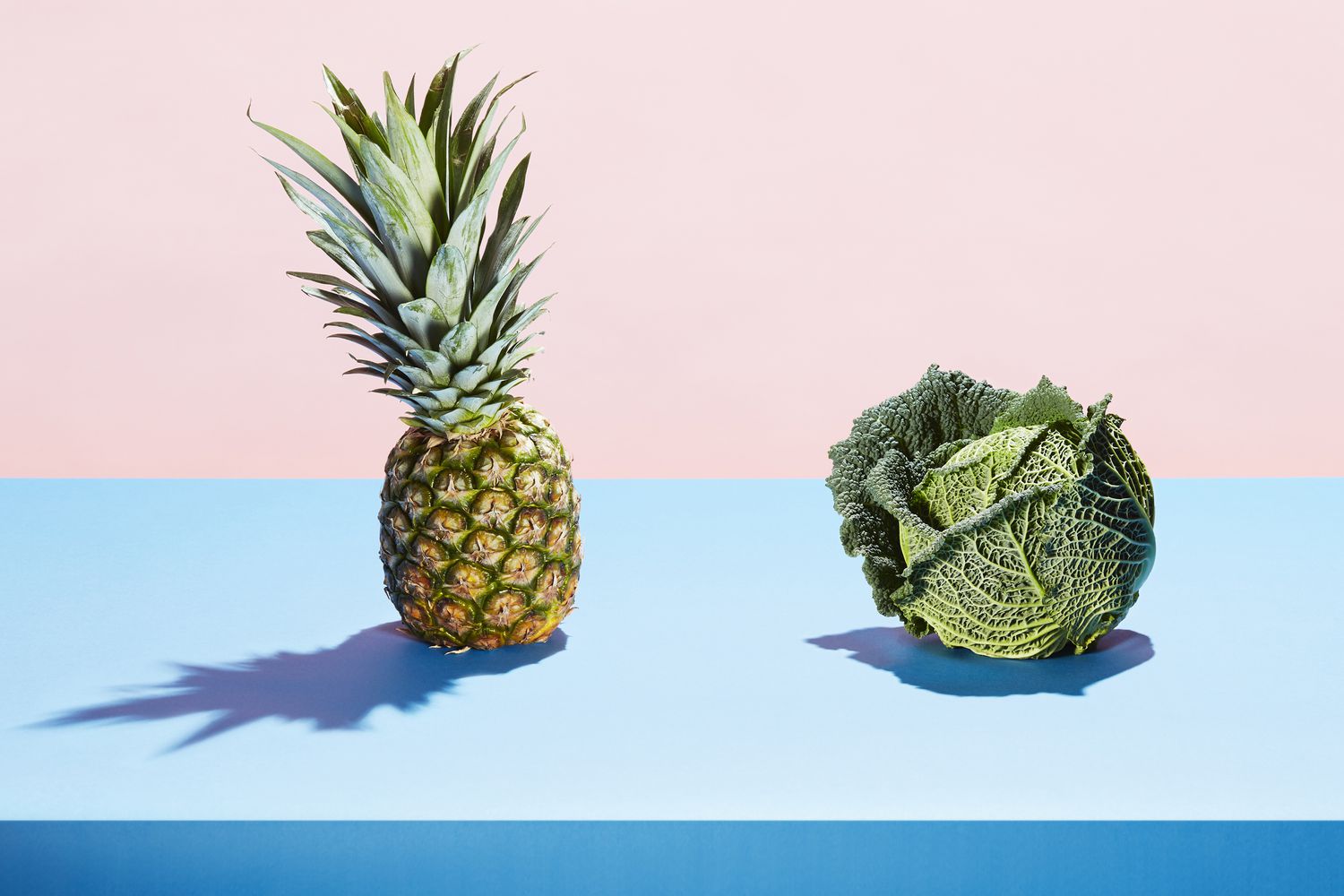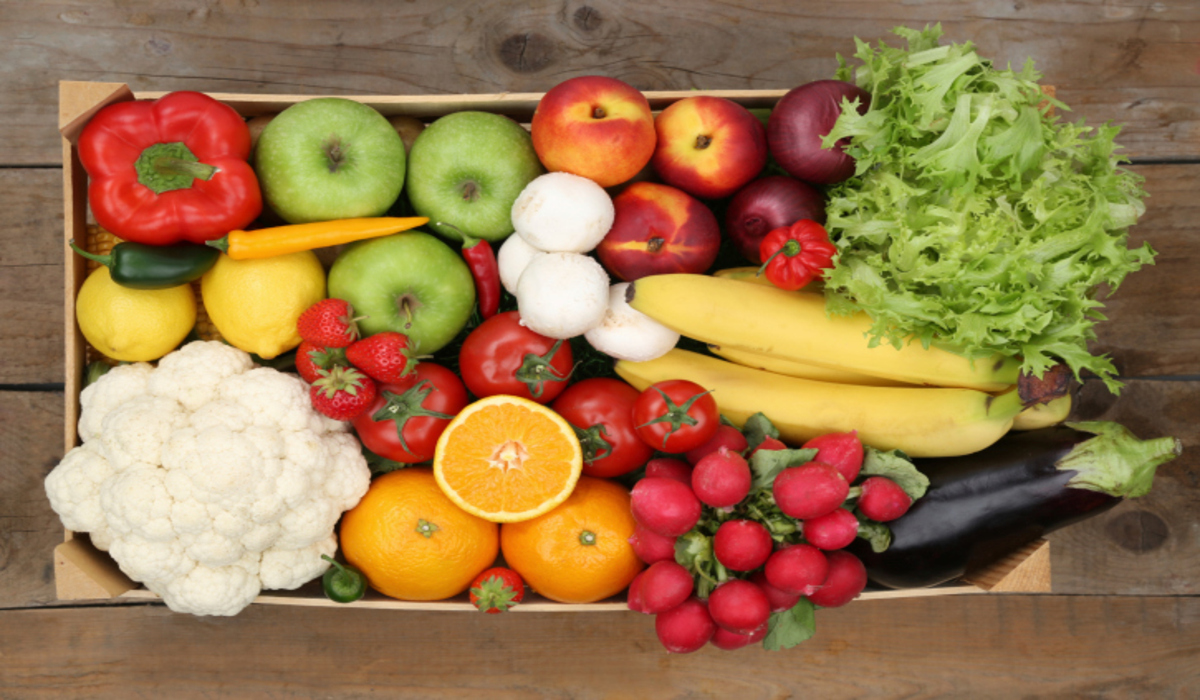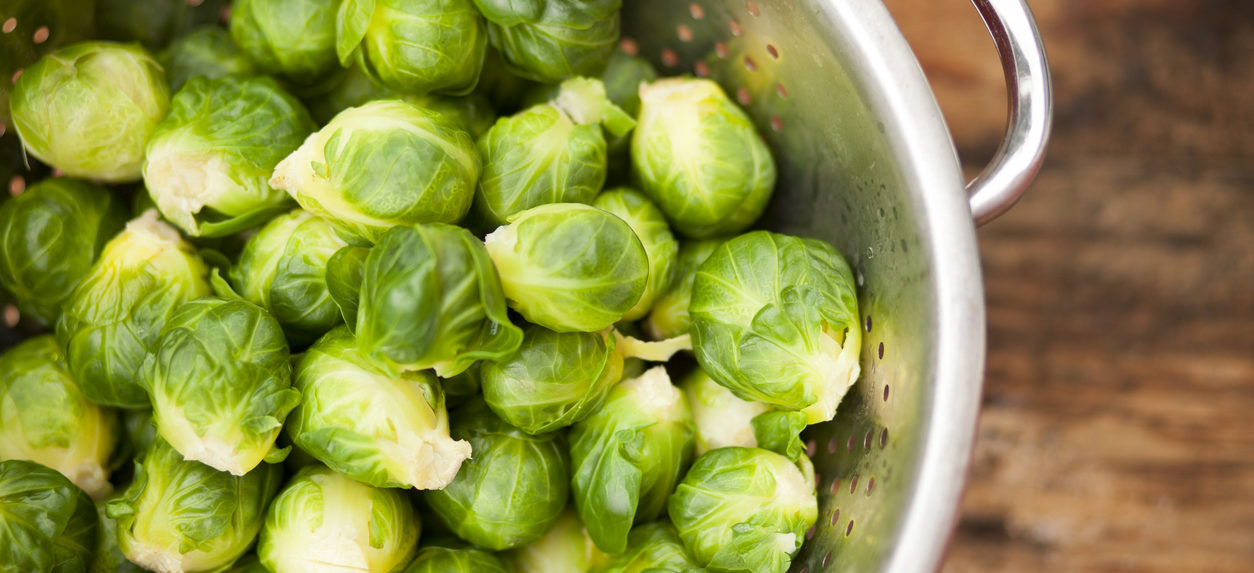Home>Gardening News and Trends>Latest News>How To Clean Your Fruits And Vegetables
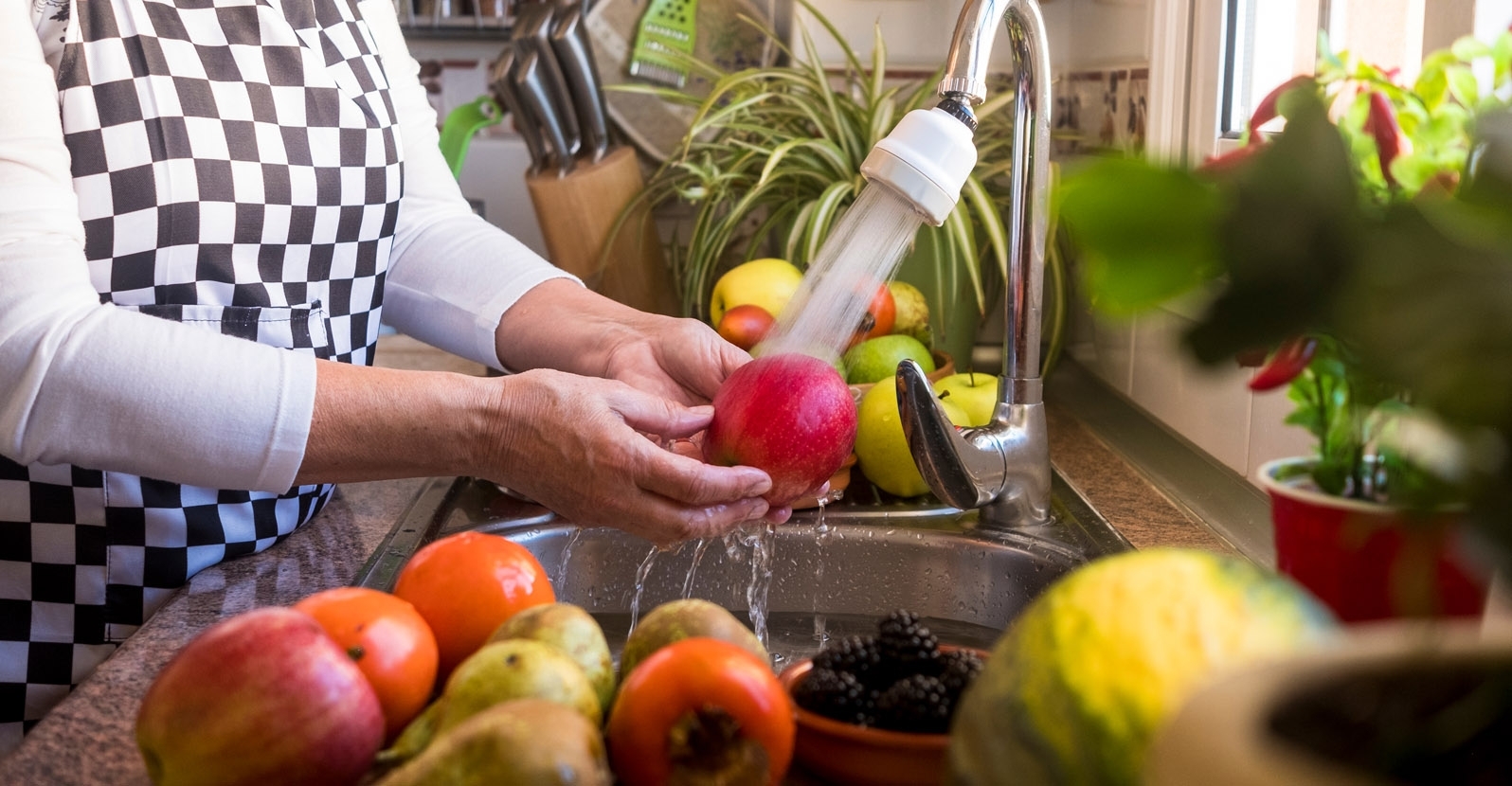

Latest News
How To Clean Your Fruits And Vegetables
Modified: January 22, 2024
Learn the latest news on how to clean your fruits and vegetables effectively. Find out the best practices and tips for ensuring your produce is safe and healthy for consumption.
(Many of the links in this article redirect to a specific reviewed product. Your purchase of these products through affiliate links helps to generate commission for Chicagolandgardening.com, at no extra cost. Learn more)
Table of Contents
Introduction
Welcome to the world of fresh produce! Fruits and vegetables are packed with essential nutrients, vitamins, and minerals that contribute to a healthy diet. However, before indulging in these nutritious delights, it is crucial to ensure that they are clean and free from any potential contaminants.
Cleaning fruits and vegetables is an important step in maintaining good overall health and preventing foodborne illnesses. Although they may appear fresh and pristine on the outside, produce can harbor invisible bacteria, pesticides, dirt, and other harmful substances that can be detrimental to our well-being.
By implementing proper cleaning practices, we can greatly reduce the risk of consuming these contaminants and enjoy our fruits and vegetables with peace of mind. In this article, we will explore the various types of contaminants found on produce, the best practices for washing fruits and vegetables, and different options for homemade and commercial produce wash solutions.
It’s important to note that the recommendations provided here are general guidelines, and specific produce may require unique cleaning techniques. Always refer to the specific instructions provided by reputable sources or the FDA for washing and handling specific fruits and vegetables.
So, let’s dive in and learn how to properly clean our fruits and vegetables to ensure their freshness, safety, and deliciousness!
Importance of Cleaning Fruits and Vegetables
Cleaning fruits and vegetables is not just a good practice; it is an essential step in safeguarding our health and well-being. Here are a few reasons why cleaning produce is of utmost importance:
Removal of Pesticides: Conventionally grown fruits and vegetables are often treated with pesticides to protect against pests and diseases. While these pesticides help ensure crop yields, they can leave residues on the produce, which may have adverse effects on our health. By properly washing fruits and vegetables, we can reduce pesticide exposure and consume produce with lower pesticide levels.
Elimination of Bacteria: Fruits and vegetables can become contaminated with harmful bacteria, such as Salmonella, E. coli, and Listeria, during various stages of production, handling, and transportation. These bacteria can lead to foodborne illnesses, causing symptoms like nausea, vomiting, diarrhea, and even more severe complications. Washing produce can help remove surface bacteria and reduce the risk of foodborne illnesses.
Removal of Dirt and Debris: Fruits and vegetables can accumulate dirt, dust, and other debris from the environment during cultivation, harvest, and transport. While these particles may not necessarily cause immediate harm, they can carry harmful bacteria or other contaminants. Cleaning produce ensures the removal of these unwanted particles, promoting cleanliness and reducing potential health risks.
Prevention of Cross-Contamination: Cross-contamination occurs when bacteria from one food item transfer onto another, potentially contaminating it. This can happen when unwashed fruits and vegetables come into contact with other foods, cutting boards, utensils, or surfaces. Properly cleaning produce helps prevent cross-contamination, keeping our kitchen and meals free of harmful bacteria.
Preservation of Nutrients: While washing produce is crucial for food safety, it’s important to note that some nutrients are water-soluble and can be lost during the cleaning process. To minimize nutrient loss, it is recommended to wash fruits and vegetables just before consumption and avoid soaking them for extended periods.
Incorporating the habit of cleaning fruits and vegetables into our daily routine can significantly reduce the risk of consuming harmful contaminants and contribute to our overall well-being. By following proper cleaning practices, we can enjoy the benefits of fresh, clean, and nutrient-rich produce while minimizing potential health hazards.
Types of Contaminants on Produce
Fruits and vegetables can be exposed to various types of contaminants throughout their journey from farm to table. Understanding these contaminants can help us take necessary precautions when cleaning our produce. Here are the different types of contaminants commonly found on fruits and vegetables:
Bacteria and Pathogens: Fruits and vegetables can become contaminated with harmful bacteria, such as Salmonella, E. coli, and Listeria. These bacteria can be present in the soil, water used for irrigation, or through improper handling during farming, processing, or transportation. Consuming produce contaminated with these pathogens can lead to foodborne illnesses.
Pesticides: Pesticides are chemicals used to control pests and diseases in agricultural practices. Although they play a vital role in protecting crops, some residues may remain on the surface of the produce. Pesticide residues can pose health risks if consumed in large quantities or over prolonged periods. It’s important to note that certified organic produce has stricter regulations regarding pesticide use.
Dirt and Soil: As fruits and vegetables grow in the soil, they can accumulate dirt and soil particles, even after being harvested. These particles may contain bacteria, organic matter, or other contaminants. Proper washing can help remove these particles and ensure cleanliness.
Wax and Coatings: Many commercially grown fruits and vegetables may have a wax or coating applied to enhance their appearance, preserve freshness, and protect against moisture loss. While these coatings are generally food-grade and safe for consumption, it’s important to wash produce thoroughly to remove any remaining wax or coating.
Chemical Residues: Some fruits and vegetables may contain chemical residues from agricultural practices, such as fungicides, herbicides, or fertilizers. These residues can be harmful if ingested in large quantities. Washing produce can help reduce chemical residue levels, although it may not completely eliminate them.
Foreign Objects: Occasionally, fruits and vegetables may have foreign objects, such as small stones, dirt clumps, or insects, embedded or adhered to their surfaces. These objects can carry bacteria or other contaminants and should be removed through proper cleaning.
It’s worth mentioning that while washing produce can help reduce the risk of contamination, some contaminants may be difficult to remove entirely. Therefore, it’s important to purchase produce from reputable sources, practice proper food handling and storage, and cook food thoroughly to further minimize any potential risks associated with these contaminants.
Best Practices for Washing Produce
Properly washing fruits and vegetables is essential in eliminating contaminants and ensuring their safety for consumption. Here are some best practices to follow when washing produce:
Start with Clean Hands: Before handling produce, it’s important to wash your hands thoroughly with soap and water for at least 20 seconds. This helps prevent the transfer of bacteria and contaminants from your hands to the produce.
Rinse under Running Water: Rinse fruits and vegetables thoroughly under cold running water to remove any visible dirt, debris, or surface bacteria. Rub the surface gently with your hands or a brush to dislodge any stubborn particles. Avoid using soap or detergent as they can leave residues and are not intended for consumption.
Leafy Greens and Herbs: For leafy greens and herbs, such as lettuce, spinach, or cilantro, separate the leaves and rinse each leaf individually under running water. This ensures effective cleaning and removal of any hidden dirt or contaminants.
Firm Produce: For firm produce like apples, cucumbers, and carrots, rubbing the surface with your hands or a brush under running water can help remove dirt, wax, and residues. Pay extra attention to crevices and any areas with visible dirt or stains.
Delicate Produce: For delicate fruits like berries or grapes, place them in a colander or strainer and gently rinse under running water. Avoid harsh rubbing or soaking, as it can damage the fruit.
Cruciferous Vegetables: Cruciferous vegetables, such as broccoli or cauliflower, may have small crevices and tight florets where bacteria can hide. Soak these vegetables in cold water for a few minutes to loosen any hidden contaminants, then rinse thoroughly under running water.
Homemade Vinegar Solution: If desired, you can create a homemade produce wash solution using vinegar. Mix one part vinegar with three parts water and soak the produce for a few minutes. Rinse the produce under running water afterward to remove any vinegar taste.
Use Produce Wash Products: There are also commercial produce wash products available in the market. Follow the instructions on the product’s label to ensure proper usage and effectiveness.
Pat Dry: After washing, gently pat dry the produce using a clean paper towel or a kitchen towel. Drying helps remove excess moisture, which can promote bacterial growth. However, avoid vigorous rubbing, as it can damage delicate fruits and vegetables.
Following these best practices for washing produce can help minimize the risk of consuming contaminants and ensure that the fruits and vegetables are clean and safe for consumption. Remember to wash produce just before consuming to maintain freshness and maximize nutrient content.
Homemade Produce Wash Solutions
If you prefer to use homemade solutions to wash your produce, you’ll be pleased to know that there are several simple and effective options available. These homemade solutions can help remove dirt, bacteria, and some pesticide residues. Here are a few popular ones:
Vinegar Solution: A mixture of vinegar and water is a commonly used and effective homemade produce wash. Combine one part vinegar with three parts water and soak the produce for a few minutes. Then, rinse the produce thoroughly under running water to remove any vinegar taste. Vinegar can help remove bacteria and some pesticide residues.
Lemon Juice and Baking Soda: Lemon juice and baking soda are both natural cleaning agents. Create a solution by mixing two tablespoons of lemon juice and one teaspoon of baking soda with two cups of water. This solution can help remove dirt, bacteria, and some pesticides. Soak the produce for a few minutes, then rinse it under running water.
Saltwater Solution: Saltwater is another effective homemade produce wash solution. Dissolve two tablespoons of salt in four cups of water and soak the produce for a few minutes. Rinse the produce thoroughly under running water afterward. Saltwater can help remove bacteria and some pesticide residues.
Hydrogen Peroxide Solution: Hydrogen peroxide can be used as a produce wash to remove bacteria and some pesticide residues. Mix one tablespoon of hydrogen peroxide with three cups of water. Soak the produce for a few minutes, then rinse it thoroughly under running water.
Baking Soda Solution: Baking soda can be used to remove dirt and some pesticide residues. Create a solution by mixing one tablespoon of baking soda with two cups of water. Soak the produce for a few minutes, then rinse it under running water to remove any residue.
When using any homemade produce wash solution, it’s important to remember that these solutions are not 100% effective in removing all contaminants. However, they can provide an extra layer of cleaning and help reduce some potential risks.
Always rinse the produce thoroughly under running water after soaking to remove any solution residue. Additionally, keep in mind that each type of produce may require different cleaning methods, so it’s important to research specific cleaning recommendations for different fruits and vegetables.
Remember, while homemade produce wash solutions can be effective, it is important to always handle and store your fruits and vegetables properly to maintain their freshness and safety.
Commercial Produce Wash Options
If you prefer the convenience of ready-to-use commercial products, there are several produce wash options available in the market. These products are specifically formulated to effectively remove dirt, bacteria, and some pesticide residues. Here are a few common commercial produce wash options:
Fruit and Vegetable Wash Sprays: Fruit and vegetable wash sprays are easy to use and generally come in spray bottles. Simply spray the solution directly onto the produce, let it sit for a few minutes, and then rinse the produce under running water. These sprays are formulated to remove dirt, wax, and some pesticide residues. Follow the instructions provided on the product for best results.
Foaming Wash: Foaming wash products are designed to create a foam that adheres to the produce, allowing it to penetrate and lift away dirt, bacteria, and pesticide residues. Apply the foaming wash to the produce, rub it gently to create foam, and rinse thoroughly under running water. These products are effective in removing contaminants and are available in various brands.
Produce Soaking Solutions: Some commercial produce wash products are designed for soaking fruits and vegetables. These products typically come in liquid concentrate or tablet form. Follow the instructions on the packaging to dilute the solution in water, and then soak the produce in the solution for the recommended amount of time. Rinse the produce thoroughly under running water after soaking. These soaking solutions help remove dirt, bacteria, and some pesticide residues.
Produce Cleaning Wipes: Cleaning wipes for fruits and vegetables are pre-moistened, disposable wipes that are convenient for on-the-go cleaning. These wipes are designed to remove dirt, bacteria, and some pesticide residues. Simply wipe the produce with the damp cloth, focusing on the surface and any visible dirt or debris. Afterward, rinse the produce under running water.
When choosing a commercial produce wash option, look for products that are specifically formulated for fruits and vegetables. Read the label instructions carefully to understand the recommended usage and any precautions that need to be taken. It’s also important to note that commercial produce wash products may not completely eliminate all contaminants, but they can help to reduce certain risks associated with fresh produce.
Remember to always rinse produce thoroughly under running water after using a commercial produce wash product, as this helps to remove any residue and ensure the produce is clean and safe for consumption.
Ultimately, the choice between homemade and commercial produce wash options depends on personal preference, convenience, and availability. The most important aspect is to choose a method that effectively cleans the produce and promotes food safety.
Drying and Storing Cleaned Produce
After washing your fruits and vegetables, proper drying and storage are crucial to maintaining their freshness and preventing bacterial growth. Follow these guidelines for drying and storing your cleaned produce:
Pat Dry: After rinsing, gently pat dry the washed produce using a clean paper towel or a kitchen towel. Drying the produce helps remove excess moisture, which can promote bacterial growth. However, avoid vigorous rubbing, as it can damage delicate fruits and vegetables.
Air Drying: For sturdier produce like apples, oranges, or potatoes, you can place them on a clean drying rack or towel to air dry. Ensure that there is good airflow around the produce to allow the moisture to evaporate naturally.
Avoid Stagnant Water: Do not leave washed produce sitting in standing water or in a bowl with excess moisture. This can create a breeding ground for bacteria and shorten the shelf life of the produce. Instead, allow the produce to dry completely before storing.
Proper Storage Containers: Use clean, dry storage containers for storing your washed produce. Opt for containers with good ventilation or perforated bags that allow air circulation. This helps prevent moisture buildup and prolongs the freshness of the produce.
Separate Storage: Keep different types of produce separated during storage to prevent cross-contamination. Some fruits release ethylene gas as they ripen, which can accelerate the spoilage of nearby vegetables. Store fruits and vegetables in separate containers or compartments to maintain their quality.
Refrigeration: Most fruits and vegetables benefit from refrigeration to maintain freshness. However, some produce, like tomatoes, bananas, and citrus fruits, are best kept at room temperature. Refer to specific storage guidelines for different types of fruits and vegetables.
Check and Discard: Regularly check your stored produce for any signs of spoilage or decay. Remove any damaged or spoiled pieces to prevent the spread of mold or bacteria to the rest of the produce.
Wash Before Consumption: Although you have just cleaned your produce, it’s important to give them a final rinse under running water just before consuming or cooking. This helps remove any residual dirt, bacteria, or cleaning solution that may still be present.
By following these drying and storage practices, you can ensure that your cleaned produce stays fresh, safe for consumption, and maintains its nutritional value for as long as possible. Taking these extra steps will allow you to enjoy your fruits and vegetables at their peak flavor and quality.
Conclusion
Cleaning fruits and vegetables is a vital step in promoting food safety and ensuring our well-being. Properly washing produce helps remove contaminants such as bacteria, pesticides, dirt, and residues, providing us with clean and safe fruits and vegetables to enjoy.
Throughout this article, we discussed the importance of cleaning produce and the various types of contaminants that can be found on fruits and vegetables. We explored the best practices for washing produce, including rinsing under running water, using homemade solutions or commercial produce wash options, and drying and storing cleaned produce appropriately.
Whether you choose to use homemade produce wash solutions or opt for commercial products, the key is to follow proper cleaning techniques and handle your fruits and vegetables with care. Remember to wash your hands before handling produce, rinse them under running water to remove dirt and debris, and dry them properly before storing.
While cleaning produce significantly reduces the risk of consuming contaminants, it is important to note that no cleaning method can guarantee 100% removal of all types of contaminants. Therefore, it’s essential to purchase produce from reputable sources, practice safe food handling and storage practices, and cook foods thoroughly when necessary.
By incorporating these practices into our daily routines, we can enjoy the nutritional benefits of fresh produce while minimizing the potential risks associated with contaminants. Let’s prioritize the health and safety of ourselves and our loved ones by making cleanliness a priority in our fruit and vegetable preparation.
So, the next time you’re about to bite into that juicy apple or enjoy a crisp salad, take a moment to ensure that your produce is properly cleaned. Your body will thank you for the extra care and attention you’ve given to ensure its safety and well-being.
